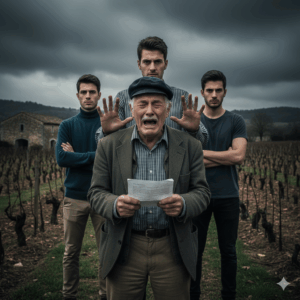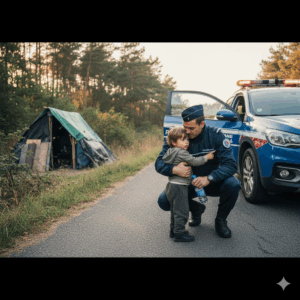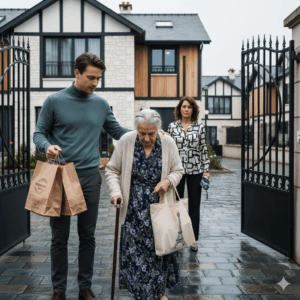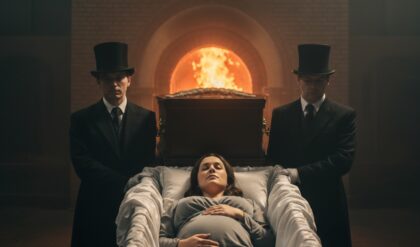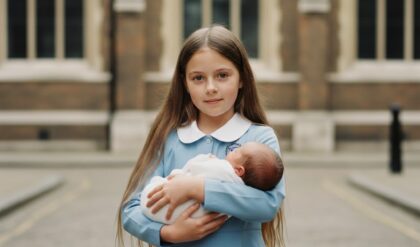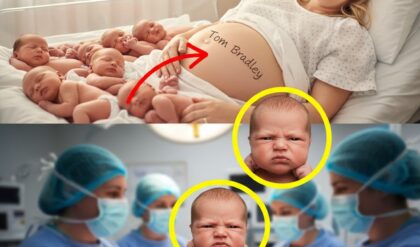My daughter lost her life after her first night of marriage. Suspecting something, I demanded a second autopsy. The phone rang at 5 a.m. with the news that would destroy my existence forever. Amanda had died during the early hours of the morning at her husband’s house just 12 hours after saying yes at the altar.
I rushed to the hospital like crazy, still dressed in wrinkled pajamas. My bare feet slipped on the cold hallway floor as I desperately searched for the living room where my little girl was. When I finally saw her lying on that stretcher, covered by a white sheet, my world collapsed. Her cheeks, always pink, were pale and her brown hair spread out on the pillow as if she were simply asleep.

“Respiratory parors,” the doctor said in a monotone voice. as if reading a climate report. Sometimes it happens, especially in cases of intense emotional stress, marriage, life change. But I knew my Amanda better than anyone else in this world. She was strong, healthy, full of life.
Just the night before he had hugged me at the party, whispering in my ear that he had a wonderful surprise to tell me in a few days. Her eyes shone with a special secret, the same sparkle she had when she was a child and hid birthday presents. Marcus, her new husband, was crying in a corner of the room. Her tears seemed sincere, but something about her posture made me deeply uncomfortable.
He avoided my gaze, rubbed his hands nervously, and muttered incomprehensible words. When I reached out to comfort him, I noticed fresh scratches on his arms. What are those marks?, I asked, pointing to the wounds. “Ah, that was the neighbors’ cat yesterday afternoon,” he replied quickly, rolling up his shirt sleeves to cover the scratches.
But Amanda was allergic to cats. He would never come near one. During the wake I watched Marcus’ every move. He received his condolences with a sorry air, but his eyes did not show the devastating pain I felt. He seemed more relieved than distressed. When no one was looking, he constantly checked his cell phone and even smiled discreetly when reading a message.
His family, the Westbrooks, controlled half of the businesses in the city. Marcus’s father was a judge, his mother an influential lawyer. They arrived at the wake in luxury cars, impeccably dressed and talking quietly to each other, as if they were at a business meeting instead of a funeral. What an unexpected tragedy,” Judge Westbrook told other guests.
Amanda always seemed too fragile for Marcus. Maybe the heart couldn’t stand the emotion. Fril. My daughter ran marathons, climbed and had the energy of 10 people together. Three days after the burial, I went to the apartment Amanda and Marcus had rented to begin their married life. I needed to pick up some memories of my little girl, childhood photos that she had taken to decorate her new home.
Marcus said he could take whatever he wanted, but he seemed anxious for me to leave soon. In the room I found the white lace nightgown that Amanda would wear on her honeymoon. It was torn and stained with something that looked like blood. When I asked Marcu about that, he mumbled a confused explanation about Amanda tripping and hurting herself.
But what caught my attention the most was a crumpled piece of paper in the bathroom trash can. It was a positive pregnancy test. Amanda was pregnant and hadn’t told me yet. That was the surprise he wanted to share with me in a few days. I confronted Marcus about the pregnancy. He was visibly disturbed and admitted that Amanda had told him about the baby on their wedding night.
She said that they were very happy with the news and celebrated until late, but her version did not match the state in which I found the nightgown. I sought out the coroner responsible for Amanda’s autopsy. Dr. Richardson was an older, experienced man who had worked at the hospital for decades. When I asked him about the procedures performed on my daughter’s body, he hesitated before answering.
Cases like this are sensitive, Mrs Morgan. Sometimes it’s better to leave the dead alone. But I couldn’t have peace. Something very serious had happened that night and I would discover the truth at all costs. Amanda deserved justice and so did her baby. That’s when I made the decision that would change everything.
It would require a second autopsy, even if it had to move heaven and earth to achieve it. If you are enjoying this story and want to know how this brave mother discovered the truth about her daughter’s death, don’t forget to subscribe to the channel so you don’t miss any details of this shocking investigation. The legal battle began immediately.
The Westbrook family’s attorney, a burly man named Davidson, showed up in my office the next day. His intimidating presence filled the entire room as I placed a leather folder on my desk. “Mrs. Morgan, I understand your pain, but challenging an official autopsy is a very expensive and lengthy process,” he said in a calculatedly kind voice.
“The Westbrook family would like to offer you financial compensation to help you through this difficult time. The envelope he slipped over to me contained a check for $50,000. It was more money than I earned in two years working as a nurse at the municipal hospital, but there was no sum in the world that would make me give up on finding out what happened to Amanda.
“Put away your dirty money,” I replied tearing up the check in front of him. All I want is the truth about my daughter. Davidson sighed theatrically and put the papers away. Very good, but know that you are making a mistake. Some stones are better not to move. After he left, I called every lawyer in town.
They all gave me the same answer. They were too busy to take the case. Some were honest enough to admit that they didn’t want to confront the Westbrook family. Its power spread like tentacles throughout the community. But luck changed when I met Sara Chen, a young lawyer who had just graduated from opening an office in the neighboring city.
He had lost his own sister in suspicious circumstances years ago and knew exactly how I felt. “We’re going to get that second autopsy,” he said with fierce determination. “But I need her to be prepared for a war. The Westbrooks aren’t going to make it easy.” While Sara worked on the legal aspects, I began my own research.
I discovered that Marcus had a troubling history that his family had hidden very well. During college, two of his girlfriends had suffered strange accidents. One broke her arm in a mysterious fall. Another was hospitalized for severe food poisoning. One of them, Jennifer Wals, still lived in the city.
When I looked for her, she refused to talk at first. But after much insistence, he agreed to meet me at a discreet coffee shop on the outskirts of town. “Marcus is dangerous,” Jennifer whispered, looking around nervously. It has two completely different sides. In front of others he is charming and polite, but when they are alone.
She rolled up her sleeves with an old scar on her wrist. He said it was an accident, that I tripped in the kitchen, but I know it was him. Jennifer told me that Marcus had uncontrollable outbursts of anger when he didn’t get what he wanted. He was especially violent when he drank, but the family always managed to cover up incidents with money and influence.
Why didn’t you report it at the time, I asked. I tried, she replied with tears in her eyes. But who would believe me against the word of a Westbrook? The chief of police is a friend of the judge. The prosecutor plays golf with him every Sunday. Two weeks later, we finally received judicial authorization for the second autopsy.
The judge in charge of the case was not Marcus’ father, but a magistrate from another district who had no ties to the family. Sara had managed to transfer the process through a brilliant legal maneuver. Dr. Patricia Hoffman, the independent coroner who would perform the new exam, had an impeccable reputation. He had worked at the FBI before retiring and specializing in controversial cases.
When we met in his lab, his serious look gave me the first real hope in weeks. “Mrs. Morgan, I will conduct this examination with the utmost scientific rigor,” he promised. “If there is evidence of violence, I will find it.” The exhumation took place on a rainy morning in October. Watching Amanda’s coffin removed from Earth was torture, but necessary.
Each shovel of earth removed brought me closer to the truth I was looking for. Dr. Hoffman worked for three full days. When he finally called me to discuss the results, his voice was strained with indignation. “You need to come to my office right away,” he said. What I’ve discovered is going to shake this whole city. In Dr. Hoffman’s office.
My life changed forever. She placed several X-rays against the light and pointed out areas that looked like dark spots on Amanda’s bones. “Your daughter was brutally beaten,” he said in a controlled but furious voice. Multiple rib fractures, severe head trauma, clear signs of strangulation.
And she was 4 months pregnant, not a few weeks, as Marcus alleged. My whole body trembled. How did the first forensic scientist not see that? Because he didn’t look for it, Dr. Hoffman replied. This report is a complete farce. Richardson deliberately omitted obvious evidence of homicide. Sara Chen was by my side when we received this devastating information.
His fists were clenched in rage as he studied every detail of the new report. With this evidence, we can not only prosecute Marcus for homicide, but also Richardson for obstruction of justice, she said. But we need more. We need to find out why he covered up the crime. We began to investigate Richardson’s financial life.
Sara had contacts in the banking system who helped her discreetly. What we discovered was shocking. Three days after Amanda’s death, a $100,000 transfer was deposited into the coroner’s account. The origin, a shell company controlled by the Westbrooks. But our research attracted unwanted attention.
One night, on my way home from a meeting with Sara, I realized that I was being followed. A black car kept a constant distance behind mine, making the same curves as me. When I got home, I found the front door ajar. Someone had been there.
Nothing was stolen, but the drawers were scrambled and the papers scattered. It was a clear message. They knew where he lived and could come in whenever they wanted. The next day, Sara received a threatening call at the office. A distorted voice said she should stop sticking her nose where she wasn’t called if she wanted to continue practicing law in the region.
But far from intimidating us, those threats only showed that we were on the right track. We decided to accelerate our strategy before they tried to silence us completely. That’s when I met Thomas Red, a retired investigative journalist who had covered corruption cases for decades.
Sara had secretly contacted him, knowing that we needed someone with experience in exposing powerful families. “The Westbrooks are like an octopus,” Thomas explained during our first meeting at a restaurant far from town. Its tentacles reach commissioners, prosecutors, judges, but every octopus has a weak point.
Thomas had discovered something extraordinary by going through old newspaper files. Five years ago, a young woman named Lisa Parker had died suspiciously after a party at the Westbrook house. The case was quickly filed, but Thomas still had his original notes. “Lisa was Marcus’ girlfriend at the time,” he said, showing old photos.
She died of an accidental overdose, but she never used drugs in her life. His parents tried to question him, but were silenced with generous compensation. We found out that Lisa’s parents, devastated by the loss and enforced silence, had moved to another state, but Thomas managed to track them down.
When we spoke on the phone with Lisa’s mother, she broke down in tears. We always knew that Marcus killed our little girl, he blew it, but we had no way to prove it. They bought everyone. She agreed to mail us some evidence that she had kept secret all those years. Photos of Lisa with unexplained bruises in the weeks before her death, troubling text messages she had sent friends talking about Marcus’ violent behavior.
While we were putting together our dossier, I made a disturbing discovery in Amanda’s apartment. Going through her belongings more carefully, I found a diary hidden under the mattress. The last few pages revealed that Amanda had become suspicious of Marcus’s explosive temper. “It changed after the engagement,” she wrote.
“Sometimes he has a strange look, as if he were someone else. Yesterday he squeezed my arm so tightly that it left a mark.” He said it was a joke, but it hurt a lot. The last entry was two days before the wedding. “I’m scared.” Marcus found out about the baby ahead of time and was enraged. She said she should have waited for the honeymoon to get pregnant, but maybe when we get married she’ll be really happy.
That entrance destroyed me. My daughter had died knowing she was in danger, but hoping things would get better. With all that evidence in hand, Sara asked for an urgent meeting with the public prosecutor. It was time to file our indictment against Marcus Westbrook. Prosecutor Daniel Morrison received us in his office with obvious skepticism.
He was a middle-aged man who clearly didn’t want problems with influential families. But when Sarah began to present our evidence, her expression changed drastically. “Oh my God,” she whispered as she saw the X-rays from the second autopsy. “How did Richardson allow this to happen?” “Why did they pay you for that?” Sara replied, tossing bank statements showing the $100,000 transfer onto the table.
Morrison studied each document with growing indignation. The photos of Lisa Parker, Amanda’s diary, the testimonies of Marcus’s ex-girlfriends, all formed an undeniable pattern of systematic violence covered up with money and power. “We have enough evidence to arrest Marcus for aggravated intentional homicide,” Morrison finally said, and Richardson for obstruction of justice and falsification of official documents.
But the moment we were leaving the prosecutor’s office, my phone rang. It was Thomas Red, and his voice was altered with panic. Margaret, run. The Westbrooks discovered our research. I just received an anonymous call warning that they will try to silence you today. My blood ran out.
Sara immediately called the state police, avoiding local officers who might be on the Westbrooks’ payroll. In less than an hour, federal agents were escorting us to safety. It was then that we discovered the true magnitude of the conspiracy. The FBI had already been investigating the Westbrook family for months for money laundering and judicial corruption.
Our evidence about Amanda was the missing piece to close the case against them. Special Agent Catherine Davis explained to us that Marcus was not just a killer, but part of a larger criminal operation. The family used its influence to cover up crimes of various kinds, collecting bribes from other wealthy criminals in the region.
“They don’t know what a favor they did for justice,” Officer Davis said. “With Amanda’s case, we can dismantle this entire network of corruption.” Marcus’ arrest happened in spectacular fashion the next morning. Federal agents surrounded the Westbrooks’ mansion while he was still sleeping.
Television cameras captured the moment he was taken away in handcuffs, his respectable man’s mask finally removed. Judge Westbrook and his wife were also arrested for obstruction of justice and criminal gang formation. Richardson was caught trying to flee town with a suitcase full of cash, but the most shocking twist came during Marcus’ interrogation.
In the face of irrefutable evidence, he finally confessed not only to Amanda’s murder, but also to Lisa Parker’s. She wanted to leave me, he said with terrifying coldness during the recorded testimony. And Amanda also said she would leave after the baby was born. I can’t let people just abandon me.
The confession revealed the twisted mind of a psychopath who viewed women as personal property. When they tried to leave, he preferred to kill them rather than lose them. The trial became national. Families of other victims of the Westbrooks’ corruption began to demonstrate, creating a wave of public outrage that swept the country.
The hashtag alpadilla justustice foramanda spread through social networks, turning my daughter into a symbol of the fight against the impunity of the powerful. During the trial, I gave my testimony with a firm voice despite tears. I told the jury about the real Amanda, the brave girl who dreamed of being a doctor, who helped the elderly in the nursing home on weekends, who radiated kindness wherever she went.
Marcus Westbrook didn’t just take my daughter’s life, I said, looking straight into the dock. It killed all the dreams she hadn’t yet realized, all the lives she could have saved as a doctor, all the joys she could have brought into the world. Marcus avoided my gaze, but I could see the discomfort in his posture.
For the first time he was being publicly confronted with the consequences of his actions. The jury deliberated for only 3 hours. When they returned with the verdict, the silence in the courtroom was absolute, guilty of qualified intentional homicide with aggravating circumstances. The sentence was life imprisonment without the possibility of parole.
Judge Westbrook was also sentenced to 20 years in prison and Richardson to 15 years. When I left the courthouse that day, I felt for the first time in months that I could breathe fully. Amanda had finally received justice. Six months after the trial, my life had changed in ways I never imagined.
The fight for justice had transformed me from an ordinary nurse into a national advocate for the rights of victims of domestic violence. But the most extraordinary surprise came when Sara Chen knocked on my door on a rainy spring afternoon. He had a folder of documents and an expression that mixed joy and nervousness.
Margaret, I need to show you something we discovered during the investigation of the Westbrooks’ assets. he said, handing me some papers. They were documents from a private orphanage in another state. My heart almost stopped when I read the name on the birth certificate. Daniel Thompson, born on the same date that Amanda had died.
The baby had survived an emergency C-section at the hospital, but the Westbrooks had falsified documents claiming the child had been stillborn. They hid their grandson, Sara whispered. The boy has been alive and well in an orphanage for almost a year. The tears I shed in that moment were different from all the others I had cried.
They were not tears of pain, but of overwhelming joy mixed with rage at the Westbrooks’ cruelty. Two weeks later I held my grandson for the first time. Daniel had Amanda’s green eyes and the same smile that lit up any place. When he grabbed my finger with his tiny little hand, I felt Amanda present in that room.
As if approving our meeting, the adoption was quickly finalized. Sara had mobilized all legal resources to speed up the process and even prosecutor Morrison helped remove bureaucratic obstacles. Daniel was renamed Daniel Morgan, taking the last name of the family that truly loved him.
With Daniel in my life, I found a new purpose. I established the Amanda Morgan Foundation to support women victims of domestic violence and their families. The compensation I received from the state for the cover-up of the crime was fully invested in the foundation. Dr. Patricia Hoffman became our volunteer medical consultant offering free exams for victims who needed medical tests.
Sara Chen left her private practice to be our permanent attorney, helping women in need seek justice. Thomas Reed wrote a book about the case titled The Truth Doesn’t Die, which became a national bestseller. All proceeds were donated to the foundation. The book inspired other families not to give up in the fight for justice, even against powerful adversaries.
Jennifer Wals, Marcus’ ex-girlfriend, who helped me with her bravery, graduated in psychology and now coordinates our support groups. Her own healing process became an example for other survivors, but it was Lisa Parker’s mother who gave me the greatest emotional gift. She personally came to our city to thank me for getting justice for her daughter as well.
“You did what I couldn’t,” she said, hugging me. “Thank you for not giving up. Lisa can finally rest in peace.” A year after the trial, we organized a memorial ceremony at the cemetery where Amanda was buried. Hundreds of people came to pay tribute. Families who had lost loved ones to violence, women who had survived abusive relationships, activists, and supporters of the cause.
Daniel, then two years old, didn’t fully understand what was going on, but he held my hand throughout the ceremony. When it was time for the symbolic gesture, I helped him make a little white paper boat. “This one’s for Mom, Amanda,” I said softly, teaching him to place the boat over his mother’s grave, so he knows we’ll never forget her.
The gentle afternoon wind made the paper shake as if Amanda was waving to us. In that moment I understood that my daughter had not died in vain. Her death had exposed a web of corruption, saved other women from similar fates, and given birth to a movement for justice that would continue to grow.
The pain of loss would never completely disappear, but it had transformed into something bigger. Hope for other families, strength for other mothers, courage for other women to break the silence. As we walked back home, Daniel asleep in my arms, I looked up at the sky and made a silent promise to Amanda. I would continue to fight for justice until my last day so that no mother would have to go through what I went through.
The truth doesn’t really die. It just waits for the right moment to be revealed, by people brave enough to seek it, by a love strong enough to never give up. If this story touched your heart and you believe that every victim deserves justice, don’t forget to subscribe to our channel and share our message.
Together we can make a difference in the lives of those who need it most.
News
The father gave his three children 900,000 pesos in debt as payment, but they all refused — only the youngest son dared to take responsibility and take his father home to take care of him. A year later, he received the A4 paper again, and its contents surprised him…
The father gave his three children £900,000 to help pay for it, but they all refused – only the youngest son dared to take it and take his father home to look after him. A year later, he received the…
A POLICE OFFICER NOTICES A 3-YEAR-OLD BOY WALKING ALONE ON THE HIGHWAY WITH DIRTY CLOTHES—WHEN THE POLICE OFFICER APPROACHES, HE DISCOVERS A HORRIFYING REALITY
The sun was still high when Patrolman Daniel Vergara noticed a small figure on the side of the highway. At first he thought it was just a child playing with his parents in a nearby house. But as he approached,…
Eight Months Pregnant, I Overheard My Billionaire Husband Plot to Steal My Baby—He Bought an Airline to Trap Me, But My Father Grounded His Empire
The Golden Cage By the time I realized the door had locked, I was already inside. What began as a whirlwind romance—private museums, sunset flights, a penthouse view that made Manhattan look like a jewelry box—became a life curated for…
Every day, a 70-year-old pensioner bought 40 kg of meat from a butcher she knew. One day, the butcher decided to follow her, and when he saw where she was putting so much meat, he called the police.
Every single day, a 70-year-old retiree visited the same butcher shop and ordered forty kilograms of beef. The butcher, puzzled by such a massive order, decided one day to explore it what she was really doing with all that…
A 70 year old mother came to her son to borrow money for medical treatment, but her son only gave her a pack of noodles and then politely sent her home. When she got home and opened it, she was shocked by what was inside.
The 70-Year-Old Mother Knocked on Her Son’s Door to Borrow Money for Surgery — He Only Handed Her a Pack of Instant Noodles. But When She Opened It at Home, She Froze in Tears. It was late afternoon in rural Texas,…
At 65, He Finally Married the Young Woman He Had Loved in Secret for Years — But on Their Wedding Night, When He Gently Undid Her Gown, the Truth Hidden Beneath Left Him Shaken and Changed Their Lives Forever
A Life of Solitude At sixty-five, Arthur believed his story was already written. His wife of four decades had passed away five years earlier, leaving behind a silence that filled every corner of his house. Each evening, he sat alone…
End of content
No more pages to load
